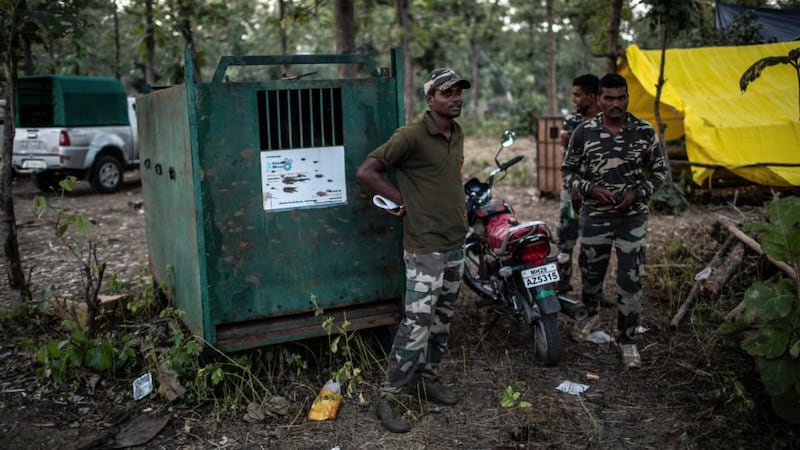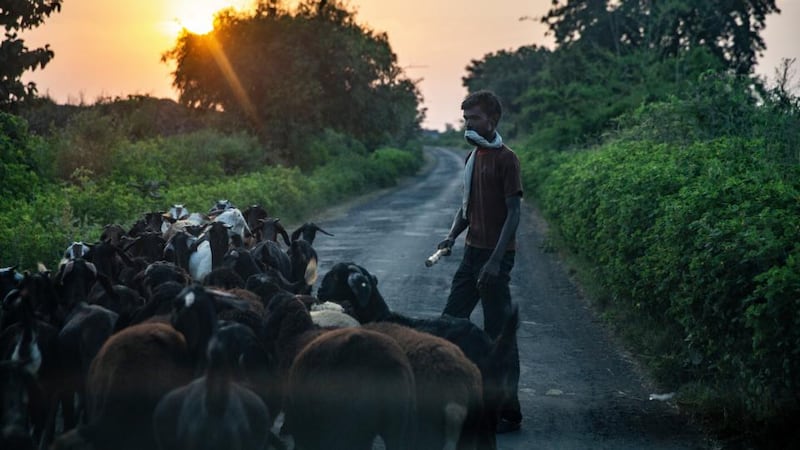Do man-eating tigers like Calvin Klein aftershave? Indian authorities are about to find out. For the past six months forest rangers in a wet and bushy patch of central India have been chasing a cunning female tiger suspected of killing 13 people. They have thrown just about everything they have at the tigress – hundreds of foot soldiers to comb the jungle, bulldozers to clear it, sharpshooters, jeeps, camera traps, a thermal-imagery drone and five Indian elephants – in the hope of surrounding the tigress so the veterinarians riding the elephants can dart her.
No luck. So the rangers plan to deploy a new weapon: a bottle of Calvin Klein Obsession for Men. "I know, it's really funny," Sunil Limaye, one of the top forestry officials directing the tiger hunt, says . "But what are we going to do?"
This aftershave includes civetone, a compound originally derived from the scent glands of a civet although now often made synthetically. Obsession has been billed as irresistible to women. But because of the civetone it is also scientifically proven to make wild cats go gaga. They roll around it, they take huge sniffs, they luxuriate in the smell for several minutes. "Whatever is in that, cats love it," a cat expert in Australia told Scientific American. "They just seem to be in absolute heaven."


Call it outside-the-box thinking. Or just pure desperation. But India is going to need some fresh ideas if its tiger population continues to shoot up, as it has been. In the past decade India’s tiger count has soared to 2,500, the world’s largest population. At the same time, India, just after China, has the world’s second-largest human population, at 1.3 billion, and the people and tigers are getting squeezed together.
Endangered tigers are spilling out of dedicated reserves, roaming around thinning patches of forest and trotting through farms. Surrounded on all sides by villages, highways, industry and towns, the tigers are increasingly running into humans.
This is what happened to the tigress, which wildlife officials call T-1. She lives in a fragmented forest near the town of Pandharkawada, in the middle of India. She has dragged away several villagers by the neck. On some of her victims, she and her two cubs have devoured large chunks of their flesh. Villagers are panicked, avoiding their fields and locking their doors at night, which they never used to do.
Tiger experts in India say they can’t remember a recent tiger ordeal as intense as this. The Indian supreme court ruled last month that the rangers should try their best to capture T-1, to transplant her to a refuge centre or a zoo. But if that fails, they said, then T-1 can be killed.


Every morning, at sunrise, dozens of state forestry guards and police officers trudge out of a makeshift camp carrying AK-47s, tranquiliser guns and GPS locators. All day they fight their way through scratchy mazes of lantana bushes that smell sharp and peppery.
They check more than 100 camera traps. They search for tiger hairs and study the stony, undulating terrain for tiger tracks, known as pugmarks. At dusk they return, sweaty and exhausted. They line up to guzzle water and gobble down jalebi, an Indian snack of fried dough slathered in sticky syrup. Their reports stack up on a plastic table. In the boxes for observations or sightings, the answers are all the same: Nil, Nil, Nil, Nil.
In the past few months T-1 has been spotted only a few times, for just a few seconds. The rangers have sacrificed several horses to draw her out. She has ripped into them, eaten fast, then vanished. The rangers managed to dart her once, but the dart didn’t stick and she slipped away.
Tranquilliser darts are notoriously difficult to use. About 25cm long, with a feather on the back, each one looks like a flying syringe. They must be fired at close range, usually no more than 25m away. "It's going to be impossible to tranquillise her," says Nawab Shafat Ali Khan, one of India's most famous hunters, who has killed dozens of elephants and tigers that went, in his words, "rogue". "She has learnt from all these botched capture operations. We've made her very smart. Brilliant, actually."


He says it is highly unusual for a tiger to turn into a man-eater. But little traditional prey, such as deer, is left around Pandharkawada. Once a tiger encounters a person and kills, it may develop a taste for human flesh, which, Khan says, is sweeter than other animal meat because of all the ginger, salt and spices people consume. He says T-1 has learnt how easy it is to kill a person, and that she has now gone “psycho”.
The rangers plan to spray the Obsession near the camera traps to lure T-1 to a place where they can surround her. “It’s a game of wait and watch,” Limaye, the forestry official, says. “At present we are on the receiving end.” As night falls he stands on the porch of a ranger station, surrounded by bush. Nearby, in the thickening gloom, sits a steel box. It is a tiger cage, big, green, rusty and empty. – New York Times
















